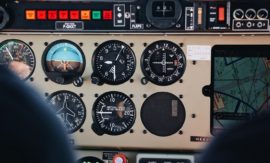Intended learning outcomes: Disclose issues linked with allocation and staging. Identify accompanying documents such as the traveling card and container logistics such as the two-bin inventory system.
Continuation from previous subsection (15.1.1)
Allocations and staging in production order release can entail problems:
An allocation is the classification of quantities of items that have been assigned to specific orders but have not yet been released from the stockroom to production.
Staging is pulling material for an order from inventory before the material is required (cf. [ASCM22]).
If one of the resources is not available, the remaining components and production facilities nevertheless remain allocated for the order. Staging has the same effect: The order waits for missing resources and, moreover, blocks the plant.
Thus all the operations for an order should be released at the same time and only when all resources are fully available. However, some of such allocated resources may be used instantly in other production orders. Then, instantly available capacity may be used, which is very important for well-utilized capacities. But assigning resources to other orders would further increase the problems for the waiting order.
To achieve an acceptable lead time for production order release as well as to make use of available capacity, a compromise — though less than optimal, since it leads to waiting work-in-process — can be reached through the following measures:
- Release only a partial quantity of the order lot.
- Release the first operations only, if the missing components are not required until later operations.
- Designate the planned order as firm planned order: With this, the allocation of components and production facilities on hand is also designated as “firm allocated.” The necessary organizational discipline then ensures that the “firm allocated” resources are not withdrawn for other orders. In addition, it is important that computer programs, such as the MRP technique (material requirements planning), do not change this type of orders automatically.
There are different kinds of accompanying documents and container logistics in production and procurement. The two following cases can be distinguished.
First case: The contents of an order change remain the same each time, with the possible exception of the order quantity:
With a traveling card, a variable order quantity can be set. The due date automatically results, in relation to the date on which the traveling card is sent.
If the entire inventory of an item can be carried in two bins, a visual control system can be installed, namely, the following efficient “traveling” system with fixed order quantity:
With a two-bin inventory system, the replenishment quantity is ordered as soon as the first bin (the working bin) is empty. During replenishment lead time, material is used from the second (reserve) bin, which has to contain enough items to cover the demand during lead time, plus a safety demand. At receipt of the replenishment quantity, the reserve bin is filled up. The excess quantity is put into the working bin, from which stock is drawn until it is used up again.
The traveling card and the two-bin inventory system have come into renewed favor with the Kanban technique and its two-card Kanban system.
Second case: The contents of an order change each time. In this case, a formal order from the ordering party (the sales department or the production management) to the order recipient (production or the supplier) is necessary. For a production order, the people at the shop floor responsible for execution require precise instructions as to the nature of the work to be executed and the components to be built in. See Section 15.2.1.
Course section 15.1: Subsections and their intended learning outcomes

15.1 Order Release
Intended learning outcomes: Describe order proposals for production and procurement as well as order release. Explain load-oriented order release (Loor) and capacity-oriented materials management (Corma).

15.1.1 Order Proposals, Order Release for Procurement and Production
Intended learning outcomes: Describe the reasons for order proposals for production or procurement. Differentiate between the dealing of order proposals for C items and of other items. Explain purchase order release. Explain production order release and describe the availability test of resources.

15.1.1b Production Order Release: Allocation, Staging, Accompanying Documents and Container Logistics
Intended learning outcomes: Disclose issues linked with allocation and staging. Identify accompanying documents such as the traveling card and container logistics such as the two-bin inventory system.

15.1.2 Loor — Load-Oriented Order Release
Intended learning outcomes: Produce an overview on the principle of the technique and the planning strategy. Describe the regulator analogy for load-oriented order release. Differentiate between time filter and load filter.

15.1.2b Load-Oriented Order Release: Example and Evaluation
Intended learning outcomes: Explain the steps of load-oriented order release. Present an evaluation of the technique. Identify its limitations and typical areas of application.

15.1.3 Corma — Capacity-Oriented Materials Management
Intended learning outcomes: Disclose the main objective of mixed-mode manufacturers. Produce an overview on the three parts of the generic principle of the technique.

15.1.3b Corma, Part 1: Criterion for early order release, and Part 2: Scheduling technique for control of operations.
Intended learning outcomes: Identify the calculation of anticipation time in the stochastic case. Explain the critical ratio of an order.

15.1.3c Corma, Part 3: Coupling shop floor control with materials management
Intended learning outcomes: Describe rescheduling of orders in process according to current materials management status

15.1.3d Corma: Example and Evaluation
Intended learning outcomes: Present an example and an evaluation of the technique. Identify its limitations and typical areas of application.
